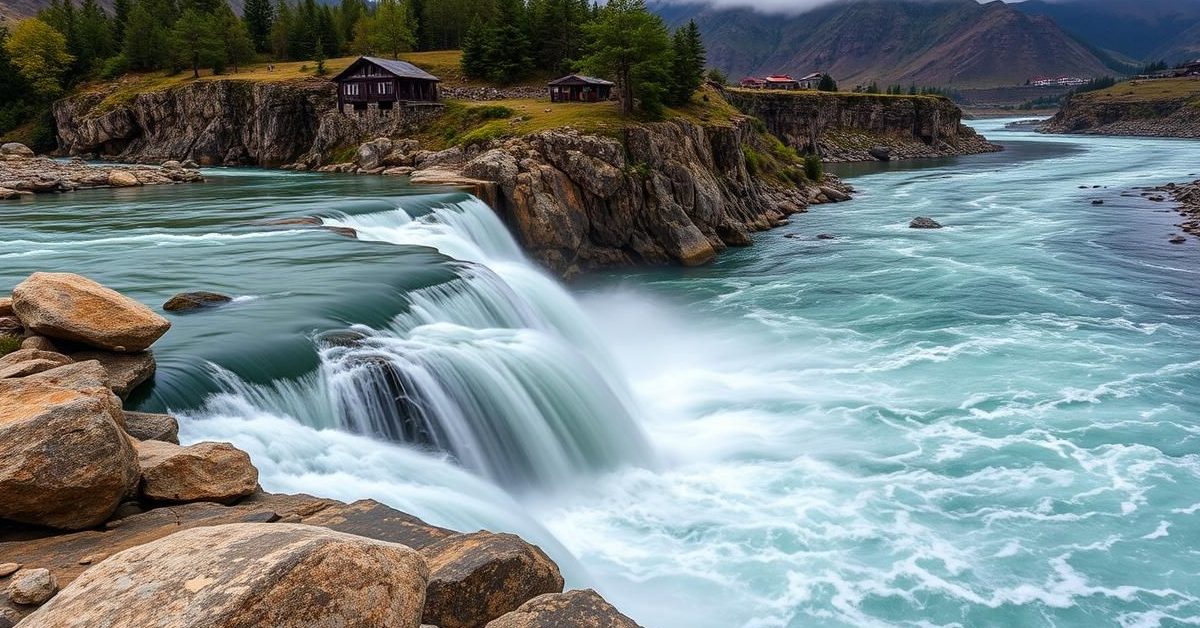Dive into key General Studies topics for the UPSC Mains exam, exploring the geopolitical significance of the Yarlung Tsangpo River and the profound influence of the monsoon season on classical Indian art traditions.
The Mighty Yarlung Tsangpo: A River of Power
The Yarlung Tsangpo, the largest river on the Tibetan plateau, begins its journey from a glacier near Mount Kailash. It spans over 500,000 square kilometers across China, India, Bhutan, and Bangladesh, with a significant 80% of its basin lying within China and India.
After flowing for 2,057 kilometers through Tibet, the river takes a dramatic “Great Bend” near Mount Namcha Barwa, close to the Indian border. In India, it enters Arunachal Pradesh as the Siang, later merging with the Lohit and Dibang rivers to become the Brahmaputra before flowing into Bangladesh.
Hydropower Ambitions and Geopolitical Tensions
The Yarlung Tsangpo’s steep descent from the Himalayas makes it a prime candidate for hydropower generation. Both China and India are actively pursuing large-scale dam projects to harness this energy. China has built dams on tributaries like the Lhasa River and completed the Zangmu Dam on the main stem, while India is also expediting its own dam clearances.
However, this development occurs in a sensitive region, crossing the disputed McMahon Line between India and China. The absence of a major international water treaty for the Yarlung Tsangpo basin adds to geopolitical concerns, especially for downstream countries like Bangladesh, which faces increased risks of intense summer floods.
Climate change further complicates the situation. Melting Himalayan glaciers are expected to increase runoff, potentially leading to higher flows and flood intensity. This raises fears among scholars of a potential “water war” if unregulated dam-building continues.
Monsoon’s Muse: Art and Emotion
The monsoon season has profoundly shaped Indian cultural works, inspiring poets, artists, and even Vedic hymns. Depictions in South Asian art often feature passionate lovers, women braving storms, peacocks, lush foliage, and joyful animals, though the emotions associated with monsoons have evolved across regions and time.
For instance, in the historically dry kingdom of Bikaner, the monsoon was celebrated as a symbol of fertility and auspiciousness, evident in the monsoon-themed frescoes of its Junagadh Fort. In contrast, the decline of the Indus Valley Civilisation is sometimes attributed to changing monsoon patterns, showcasing its historical impact beyond art.
Iconic Artistic Interpretations
Classical Indian art is rich with monsoon narratives. A 16th-century folio from the Harivamsa depicts Lord Krishna holding up Mount Govardhan to shield villagers from rain, a powerful symbol of protection. The Abhisarika Nayika, a popular heroine in monsoon art, embodies courage as she braves stormy nights and obstacles like snakes and lightning to meet her beloved.
Kalidasa’s classical Sanskrit poem, Meghaduta, where a yaksha sends a cloud as a messenger to his wife, brings the beauty of the Himalayan landscape during the rainy season to life. Furthermore, 17th-century Ragamala paintings, which link musical modes to specific moods and seasons, frequently feature the monsoon, emphasizing its pervasive presence in Indian artistic traditions.
- The Yarlung Tsangpo River is a critical source of hydropower, driving development initiatives in both China and India.
- Its course through disputed territories and lack of international water treaties raise significant geopolitical concerns and risks of conflict.
- The monsoon season has been a central theme in classical Indian art, symbolizing fertility, love, courage, and the powerful forces of nature.
- Artistic expressions of the monsoon, from ancient texts to paintings, highlight its deep cultural and emotional resonance across different regions and eras.
Both the Yarlung Tsangpo River and the Indian monsoon serve as powerful examples of how geography, culture, and geopolitics intertwine, offering rich areas for study and analysis.















